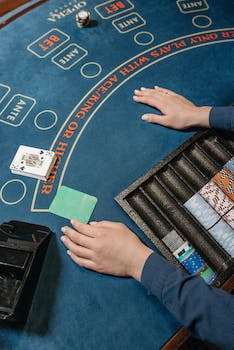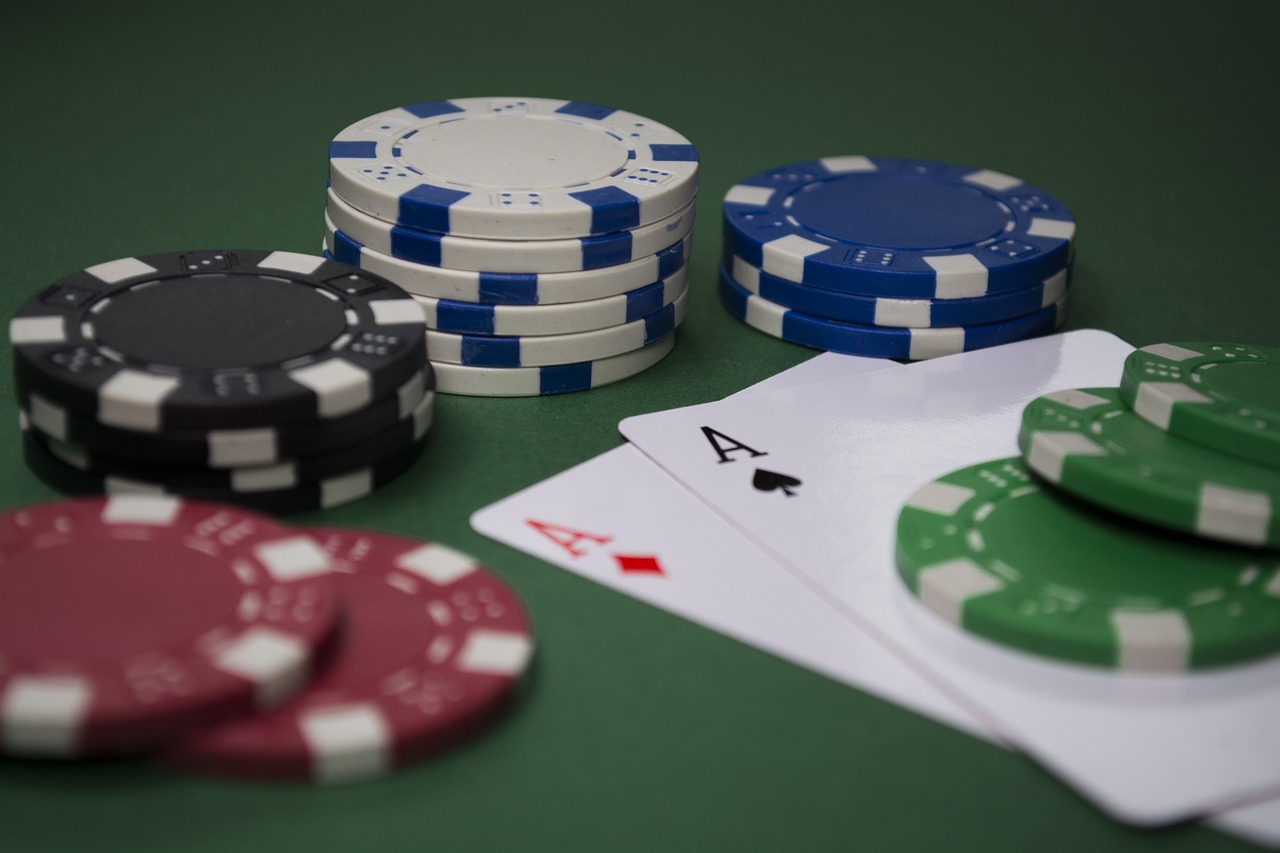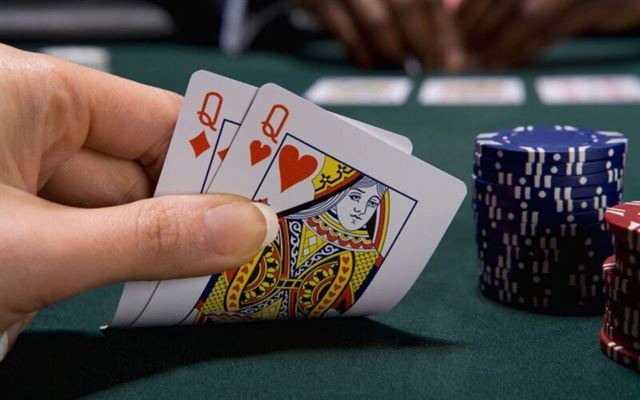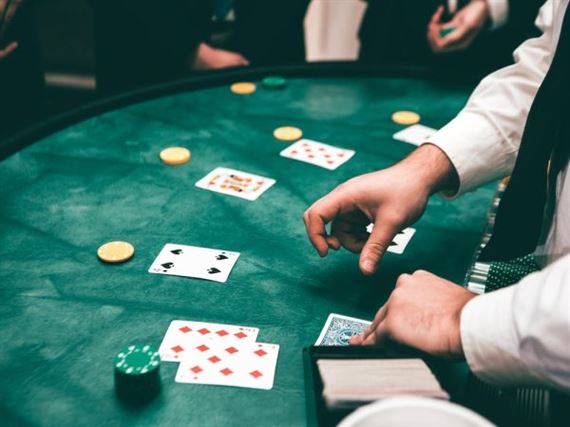Beating the Dealer: Essential Tips for Consistent Blackjack Success is a comprehensive guide that provides valuable insights and strategies for players looking to improve their blackjack game. Whether you are a beginner or an experienced player, this book offers essential tips and techniques to help you consistently outsmart the dealer and increase your chances of winning at the blackjack table. With a focus on understanding the game’s rules, mastering basic strategy, and implementing advanced tactics, this guide is a must-read for anyone seeking to enhance their blackjack skills and achieve consistent success.
The Importance of Bankroll Management in Blackjack

Bankroll management is a crucial aspect of any successful blackjack player’s game plan. It involves setting limits on how much money you are willing to risk at the table and sticking to those limits no matter what. This is important because it helps to prevent players from getting carried away and losing more money than they can afford.
One of the first steps in effective bankroll management is determining how much money you are willing to allocate to your blackjack playing. This should be an amount that you are comfortable losing, as there is always a chance that you will walk away from the table empty-handed. Once you have determined your bankroll, it is important to divide it into smaller units. This will help you to keep track of your wins and losses more easily.
Another important aspect of bankroll management is setting win and loss limits. A win limit is the amount of money that you are willing to walk away from the table with. It is important to set a win limit because it helps to prevent players from getting greedy and risking their winnings in an attempt to win even more. A loss limit, on the other hand, is the amount of money that you are willing to lose before calling it quits. Setting a loss limit is crucial because it helps to prevent players from chasing their losses and digging themselves into a deeper hole.
In addition to setting win and loss limits, it is also important to adjust your bet size based on the size of your bankroll. This is known as bet sizing. The general rule of thumb is to bet no more than 5% of your bankroll on any given hand. This helps to ensure that you have enough money to weather any losing streaks and gives you a better chance of staying in the game long enough to turn things around.
One common mistake that many blackjack players make is failing to stick to their bankroll management plan. It can be tempting to deviate from your plan when you are on a winning streak or feeling lucky, but this can quickly lead to disaster. It is important to remember that the outcome of each hand is independent of the previous hand, and that luck can change at any moment. By sticking to your bankroll management plan, you can ensure that you are making rational decisions based on sound strategy rather than emotions.
Mastering Basic Blackjack Strategy for Consistent Wins

One of the most important aspects of mastering blackjack is understanding and implementing basic blackjack strategy. This strategy is based on mathematical calculations and statistical probabilities, and it can significantly increase your chances of winning. By following a set of predetermined rules, you can make the best decisions in each situation, minimizing the house edge and maximizing your potential for success.
The first step in mastering basic blackjack strategy is familiarizing yourself with the basic rules of the game. Understanding the value of each card and the objective of the game is crucial. Once you have a solid foundation, you can move on to learning the specific strategies for different scenarios.
One of the key elements of basic blackjack strategy is knowing when to hit, stand, double down, or split. These decisions are based on the value of your hand and the dealer’s upcard. For example, if you have a hand value of 16 and the dealer’s upcard is a 7, basic strategy dictates that you should hit. This is because the statistical probability of improving your hand is higher than the probability of busting.
Another important aspect of basic blackjack strategy is knowing when to double down. Doubling down allows you to double your initial bet in exchange for receiving one additional card. This strategy is most effective when you have a hand value of 9, 10, or 11, and the dealer’s upcard is weak. By doubling down in these situations, you can take advantage of the favorable odds and potentially increase your winnings.
Splitting pairs is another strategy that can give you an edge in blackjack. When you are dealt a pair of cards with the same value, such as two 8s, you have the option to split them into two separate hands. This strategy is most effective when the dealer’s upcard is weak and when splitting increases your chances of winning. However, it is important to note that not all pairs should be split. Basic blackjack strategy provides guidelines on which pairs to split and which to keep together.
In addition to knowing when to hit, stand, double down, or split, basic blackjack strategy also involves making strategic decisions based on the dealer’s upcard. For example, if the dealer’s upcard is a 2 or 3, it is generally recommended to stand on a hand value of 13 or higher. This is because the dealer is more likely to bust with a weak upcard.
Understanding Card Counting Techniques in Blackjack

To understand card counting, it is important to first understand the basic rules of blackjack. In blackjack, the goal is to get a hand that is closer to 21 than the dealer’s hand, without going over. Number cards are worth their face value, face cards are worth 10, and an Ace can be worth either 1 or 11, depending on what is more advantageous for the player. The game starts with the player and the dealer each receiving two cards. The player can then choose to hit (receive another card) or stand (keep their current hand). The dealer must hit until they reach a hand value of 17 or higher.
Card counting works by assigning a value to each card that is dealt. The most common card counting system is the Hi-Lo system, which assigns a value of +1 to cards 2-6, a value of 0 to cards 7-9, and a value of -1 to cards 10-Ace. As the cards are dealt, the player keeps a running count of the values. A positive count indicates that there are more low cards left in the deck, which is advantageous for the player. A negative count indicates that there are more high cards left in the deck, which is advantageous for the dealer.
Once the player has a running count, they can use this information to make more informed decisions. For example, if the count is positive, the player may choose to increase their bet, as there is a higher likelihood of getting a favorable hand. Conversely, if the count is negative, the player may choose to decrease their bet or even skip a hand, as the odds are not in their favor.
It is important to note that card counting is not illegal, but it is frowned upon by casinos. Casinos have the right to refuse service to anyone they believe is counting cards, and they often employ measures to detect and deter card counters. These measures can include using multiple decks of cards, shuffling the deck more frequently, or even banning players suspected of card counting.
To be successful at card counting, it is important to practice and develop a keen eye for keeping track of the cards. It is also important to be discreet and not draw attention to oneself. Additionally, it is important to remember that card counting does not guarantee success. It simply increases the chances of winning by making more informed decisions based on the cards that have been dealt.
Tips for Spotting and Exploiting Dealer Mistakes in Blackjack

Spotting dealer mistakes requires keen observation skills and a thorough understanding of the game. Dealers are human, and like anyone else, they can make errors. These mistakes can range from simple misdeals to more subtle errors in their gameplay. By being vigilant, players can take advantage of these mistakes and increase their chances of winning.
One common mistake that dealers make is revealing their hole card accidentally. In blackjack, the dealer receives two cards, one face-up and one face-down. The face-down card is known as the hole card. Occasionally, dealers may accidentally expose their hole card while dealing. This mistake can provide valuable information to players, as they can deduce the dealer’s hand and adjust their strategy accordingly.
Another mistake that dealers often make is revealing the value of the hole card when checking for blackjack. In blackjack, if the dealer’s face-up card is an Ace, they must check for blackjack by peeking at their hole card. However, some dealers may inadvertently reveal the value of the hole card while doing so. This mistake can give players a significant advantage, as they can determine whether the dealer has a strong hand or not.
Additionally, dealers may make errors in their gameplay that can be exploited by observant players. For example, some dealers may have a tendency to consistently bust when their face-up card is a certain value. By recognizing this pattern, players can adjust their strategy and make more informed decisions, increasing their chances of winning.
To exploit dealer mistakes effectively, players must remain focused and attentive throughout the game. It is crucial to pay close attention to every card that is dealt and every move that the dealer makes. By doing so, players can spot even the slightest errors and use them to their advantage.
However, it is important to note that spotting dealer mistakes alone is not enough to guarantee consistent success in blackjack. It is merely one aspect of a comprehensive strategy. Players must also have a solid understanding of basic blackjack strategy, which involves knowing when to hit, stand, double down, or split. Additionally, managing one’s bankroll and knowing when to walk away are essential components of successful blackjack play.
In conclusion, spotting and exploiting dealer mistakes can be a valuable strategy in blackjack. By observing the dealer’s actions closely, players can take advantage of errors such as accidental hole card reveals or revealing the value of the hole card when checking for blackjack. However, it is important to remember that this strategy is just one piece of the puzzle. A comprehensive understanding of basic blackjack strategy, bankroll management, and knowing when to walk away are equally important for consistent success in the game. So, the next time you sit down at a blackjack table, keep your eyes peeled for any dealer mistakes and use them to your advantage.









